MAKING NEW FRIENDS: IT’S NEVER TOO LATE














MAKING NEW FRIENDS: IT’S NEVER TOO LATE













 By Chris Motola
By Chris Motola
Q: Congratulations on your Edward Mott Moore Award recently.
A: Edward Mott Moore was a medical giant in Monroe County medical history. In the early- to mid1830s he practiced advanced surgery and was ultimately the chair of four different surgery departments and medical schools around the country. He believed strongly in competency in the practice of medicine, and was one of the individuals who went to Philadelphia in 1847 and formed the American Medical Association. The Monroe County Medical Society, decades ago, established a recognition of physicians who they feel advanced medicine in our region. And they named this award the Edward Mott Moore Award. The award is done through individual nominations that are then considered by the awards committee. Then the individuals, if selected, are notified of something they didn't even know was happening.
Q: How do you feel about that?
A: I was notified a few months ago that I was unanimously selected as the 2023 nominee, to be formally awarded at a masquerade ball in October. I don't like attention called to myself. I think we have a community of individuals who have done things that have advanced medicine. It's an unbelievable honor to be one of the
few individuals identified to receive the Edward Mott Moore Award. They believed my contribution to setting the standards of competency, qualification and good moral character for our region were important enough that be recognized.
Q: One of your big duties is evaluating the credentials of foreign-born physicians. What are the issues that come with importing medical talent?
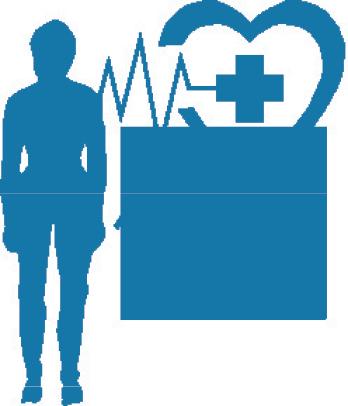
A: I'll give you a little historical context. Back in the 1740s, investigative reporters started reporting on the widespread quackery of medical practitioners throughout New York and the settling territories. One of the results was a small group of physicians advocated for a medical practice act. So in 1760 New York passed the first effective medical practice act in the world, establishing what would be the criteria for education, background and experience needed to be a licensed practitioner. That original statute was so well-written that there weren't any major revisions to it until after the Civil War. The New York State Medical Practice Act is pretty straightforward. It says you need to be qualified, competent and of good moral character. It's fairly easy to apply. If you graduate from a New York college or university and go to a New York medical school, and get post-graduate training in
New York, you qualify. Everyone else has to demonstrate that they're that good.
Q: How does that apply to training in other states?
A: Over time, by a century ago, most states had their own individual medical licensing exam. Over time we developed accreditation of medical schools across the country. We've established universal licensing examinations. So the Board of Regents now says that if you go to an accredited medical school within the United States, that's equivalent to going to a medical school in New York. Similarly if you take the US licensing examinations, we'll accept those as qualified. And the Board of Regents requires that postgraduate education programs be accredited by the Accreditation Council for Graduate Medical Education or American Osteopathic Association. If you graduate from an ACGME or AOA residency program, that's accepted as being equivalent to have gotten your postgraduate education in New York. If you don't satisfy all of those, then the burden of proof is on you to prove that your education is as good as what you would have gotten in New York.
Q: And I assume that's the big issue for foreign-trained physicians?
A: If you went to a medical school in France, England, Germany, Japan or Australia, that's nice, but that's not necessarily equivalent to going to medical school in New York. So the New York Board of Medicine works with the Board of Regents in establishing equivalency criteria. For instance, if you don't have at least the equivalent of 60 semester hours of undergraduate education and at least 132 weeks of medical school, we're not even going to look at you. If you do have that, then we'll look at the content to see if that education is functionally equivalent to what you'd get in New York or not.
Q: What are the issues you see with overseas education and training?
A: In about half the countries in the world, medical schools aren't accredited. You go to a university and, when they get tired of you,
you get a degree with a specialty in medicine. In many of these countries the first degree the student gets after high school is a medical degree. It's a baccalaureate degree. In England and in India, for instance, it's a bachelor of medicine, bachelor of surgery. Because many of them do eventually want to come to the United States, many of those programs are at least five years. Some are six or seven. That helps them satisfy the minimum semester hours and weeks. In Ukraine, you go to college and your first degree can be your medical degree and you can become a specialist by doing an apprenticeship for just a few months. No licensing exams. No board certifications. You're a doctor when you graduate. In some countries you graduate from college with a major in medical sciences. And once you do a year of military or government service, you have a lifetime medical license to practice. That isn't like New York. So those individuals that want to practice here need to bring up their CV to look like what we'd expect from a medical student graduating from a residency in New York, and the expectation that you've taken past licensing exams and specialty exams.
Q: How do you go about the vetting process?
A: What I've done with New York state for more than two decades is ask “is this doctor's resume essentially equivalent to New York?” And help the Regents establish criteria, as well as doing site visits to international schools that want to be recognized as equivalent to New York, most of which are in the Caribbean. So we'll look at applicants and see if they have equivalent experience. Much of the time, the answer is yes. Not infrequently New York state will advise the applicant that they're not yet quite qualified. In general, particularly for surgical disciplines, if you take the rest of the world, it takes about two years of postgraduate training to equal what is required in New York state in one year.
Q: Why is that?
A: We require certain experiences as part of accredited residency, varieties of patients, numbers of patients, hours on call, number of lectures. If you just take lectures, for example, most countries give fewer than half of the number of lectures US residents get per year. We expect with surgical training a certain amount of variety and volume. There is a country where you can do an ophthalmology residency never having done a single cataract operation and never even having seen once a retinal operation. If we licensed them in New York, would you want to be that doctor's first ever cataract surgery?
Name: Roger M. Oskvig, M.D.
Position: Professor of clinical medicine at the University of Rochester Medical Hometown: Williams, Iowa
Education: University of Iowa College of Medicine
Affiliations: Strong Memorial, Highland, Nicholas Noyes, Jones Memorial hospitals
Organizations: Monroe County Medical Society, Medical Society of the State of New York, American College of Physicians
Family: Wife, three sons, seven grandchildren Hobbies: Fly fishing, woodworking
Pain, Tingling, or Numbness in your hands, feet or legs may be due to Nerve Damage. If left untreated this small annoyance can lead to big problems. Unfortunately, most people have no idea what to do abut this problem and some don’t even realize how big of a problem it is. They tell their doctor who gives them drugs and injections which only mask the pain and there is no surgery, other than amputation, that will heal/stop neuropathy from progressing.
Neuropathy is a term used to describe damaged nerves, primarily in the hands and/or feet, that are progressively breaking down due to a lack of blood supply, nutrients and oxygen reaching the nerves along with a lack of communication from the brain. Since the nerves are what the brain uses to communicate with the area and they are breaking down, the brains ability to communicate with the area lessens over tine, allowing for the progression of more breakdown and worse symptoms. It can be caused by Diabetes, Poor Ciculation, Poor Nutrition, Chemotherapy, Agent Orange, Misaligned Spinal Bones Placing Pressure on the Nerves, along with over 100 other causes. “Patients experience extreme sensations, loss of feeling, even No Feelings in their Hands and/or Feet along with muscle spasms, pain, weakness, numbness, tingling, and burning and many have a very hard time with balance” says Dr. Nathan Riddle of Riddle Wellness, a Neuropathy testing and treatment clinic.
This condition can eventually lead to further nerve damage, causing complete loss of legs or arms leading to amputation, death or brain injury due to falls, burns or other injuries that will not heal, along with organ failure in some cases.
Are you or someone you love suffering with loss of balance, numbness or pain from Nerve Damage in your hands and/or feet that just won’t heal? You don’t have to any longer. This local clinic right here in Rochester, NY is helping people find lasting relief without the use of drugs or surgery! That’s BIG EWS!
More than 20 million people in the U.S. Are dealing with some form of Neuropathy. Most commonly noticed first in the hands or feet, causing weakness, numbness, tingling pain and debilitating balance problems, often frustrated with no place to turn to and no hope of recovery. “By the time they come to see us, they feel like they have tried everything. Their MD put them on Anti-Seizure or Epilepsy meds like Gabapentin, Neurotin, Cymbalta or Lyrica and told them they will just have to live with the pain,” said Dr. Riddle.
With recent advancements in nerve regeneration technology and treatment options, clinics all over are seeing larger success rates and faster results with their neuropathy patients.
“This new technology paired with our multifaceted approach, has been life altering for our patients and our clinic,” said Dr. Riddle.
The development and success of these new, highly effective Neuropathy Protocols by Dr. Riddle and his team at Riddle Wellness have been the talk of the town in recent months. “Neuropathy patients have been coming in from all over the state and the results that they are getting is truly amazing,” said the Patient Coordinator at the Clinic. There are some things people can do at home to aide in the healing process of their neuropathy however, healing neuropathy is an all-encompassing process that ill require lifestyle changes, home care and may or may not include chiropractic, (varying from patient to patient) along with guidance from a medical professional that is experienced, skilled and trained to treat neuropathy.
Dr. Riddle and his skilled care team in Rochester have been treating neuropathy for years now in and judging by their 5 Star patient reviews, and all their patient video testimonials, they have been doing a very good job providing excellent patient care. One person had all but given up, they were crying in their testimonial. They were so thankful and its all because of this amazing new treatment option! They state it
ing pain, numbness, tingling, pins and needle sensations, cramps and burning in your feet, or hands, along with the many other bodily symptions this horrible condition plagues people with, take action because it will progress.
Not everyone is able to start care at the clinic but, those who do are thankful! Find out if you are a candidate for their Neuropathy Protocols so they can help you regain the feeling in your hands or feet, stop the pain and start living life again! “Our Neuropathy Protocol is a multifaceted approach to heal neuropathy by nurturing the nervous system, increasing circulation, blood and oxygen, working to rebuild, strengthen and balance the body, all while stimulating the damaged nerves. Revitalizing and healing the damaged areas, enabling them to reactivate and function at an increasingly higher rate over time, all while increasing the patients quality of life dramatically,” said Dr. Riddle.
has about a 98% effective rate!
FIND LASTING RELIEF
Claim Your Voucher Now for a Consultation & Examination to determine if you are a good candidate for treatment... Dr. Riddle and his care team are here once again to help readers learn about new options for finding pain relief! Call the clinic today to receive your comprehensive (normally $250).
The clinic utilizes the most advanced Pain Free Testing and a full, easy to understand report of finding
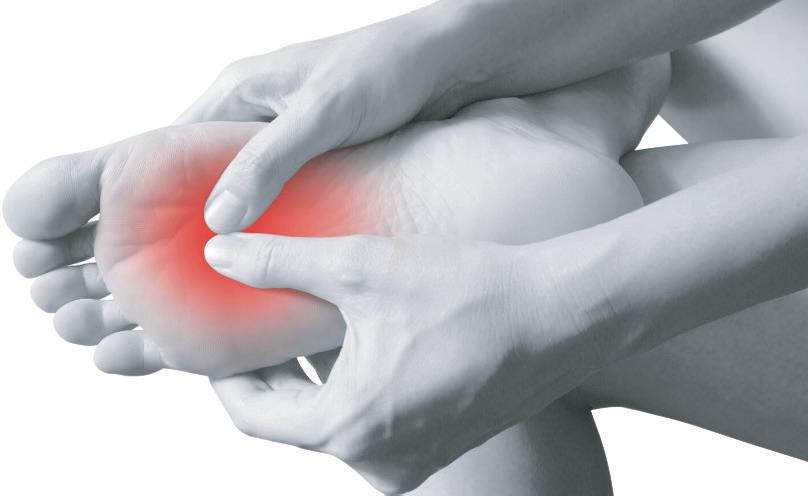
with Dr. Riddle going over your options for care if you are able to move forward.
Call 585-670-0020 and use Code NUMB0021. They have agreed to reduce their usual cost of $250.
But hurry, due to the number of patients the office can see, this is a limited time offer, with only 25 spaces at this exclusively discounted rate. These will be on a first come, first serve basis, messages left will count. My advise, don’t suffer any longer, waiting around for it to get worse... If you or your loved one is experienc-
Over the years they have treated thousands of patients with chronic conditions of Neuropathy, Sciatic nerve pain, Back & Neck problems, Whiplash Injuries along with Knee Pain. The office is well known and has a good reputation. Patients drive hours to this clinic and the vast majority enjoy superior, lasting relief. In fact, many who have suffered and tried other treatment options with no luck, only to have been told that they are just stuck with their pain and discomfort, have credited the care team at Dr. Riddle office for giving them their lives back!
Call them now at their Rochester, NY location, for a full, thorough Consultation and extensive Neuropathy Consultation at $49. Use Code: NUMB0021 (saving you over $200) to determine if and how Dr. Riddle and his team can help you recover, just as they have helped so many others that suffer with the Pain and Numbness of Nerve Damage.
“I feel like myself again. The pain is gone and I am even sleeping through the night”
~Gill B. Rochester NY

Question from a reader
I’ve been divorced for about a year now, and struggle with loneliness. I miss the friends we shared as a couple, but I’m just not comfortable socializing with couples anymore. I’m 58, and it feels awkward to try to make friends at my age. Any advice for me?
Answer from Gwenn
You’re not alone. Unfortunately, what you are experiencing often happens in the aftermath of a separation or divorce, especially if it was acrimonious. Friends’ loyalties can be split and, just as you feel uncomfortable relating to your former “couple” friends, some couples may feel uncomfortable relating to a now-single friend.
So how do you meet new people and cultivate friendships as an adult? Here are a few tips:
• First, be your own best friend
Taking care of yourself matters. Loving yourself shows. When you feel good about yourself you radiate a calm confidence and kindness that invites people in.
Healthy, positive people attract and gravitate to other healthy, positive people where friendships can flourish.
• Do more of what you enjoy doing
You won’t make new friends sitting alone at home. Get out of the house and do those things that bring you joy, whether it’s practicing yoga, learning a new language, taking a cooking class, playing music or any number of activities that put you with others.
You’ll meet people who share and appreciate your interests and aspirations, which — to quote Humphrey Bogart in “Casablanca” — could lead to “the beginning of a beautiful friendship.”
• Consider a support group
It’s not uncommon for new friendships to be borne out of compassion and empathy. A divorce or grief support group will put you in touch with others facing similar challenges.
A friend of mine met her second husband in a divorce support group. She shared, “We got to know each other as friends first, and have remained ‘best friends’ throughout our marriage. It’s the best thing that ever happened to me.”
• Say “yes” to invitations and opportunities to be with people
Circulating at neighborhood porch parties, gallery openings, retirement parties, weddings, etc. can be the ticket to making a new friend. You’ll be out and about with people with whom you share something in
Family game night can be more than just a fun time: New research suggests it may even help build some early math skills in young children.

While past research has pointed to games as a way to enhance reading development and literacy, a new comprehensive review finds that number games like Monopoly, Othello, and Chutes and Ladders may help children with math.
“Board games enhance mathematical abilities for young children,” said lead author Jaime Balladares, from Pontificia Universidad Católica de Chile, in Santiago. “Using board games can be considered a strategy with potential effects on basic and complex math skills. Board games can easily be adapted to include
learning objectives related to mathematical skills or other domains.”
These number-based games help improve counting, addition and the ability to recognize if a number is higher or lower than another for young children, according to the study.
Children benefit when they play board games a few times a week supervised by a teacher or another trained adult, the study authors said.
The researchers reviewed 19 studies published from 2000 onward involving children aged 3 to 9. Most of the studies focused on the relationship between board games and mathematical skills.
The children each received special board game sessions about twice a week for 20 minutes over about
common.
Show up and don’t be shy about extending an invitation to someone you meet. It could be a cup of coffee, drinks after work or walk in the park.
• Don’t overlook your family
My sister is my best friend, and she helped me re-establish a network of friends after my divorce. I had gone into the proverbial “cave” and lost contact with practically everyone.
Her friends became my friends, and now, years later, I enjoy the company of her friends, as well as my own.
• Rekindle relationships with old friends
It happens. It’s not uncommon for friends to drift apart when careers, marriage, kids or other life events require time and focus. But things change. Life marches on and many of us have retired and become empty nesters. You now have glorious time on your hands to reconnect with old friends — friends who were an important part of your life at one point and may still have lots to offer.
Just yesterday, I got a text from an old friend. It began, “It’s been ages! I just retired in June after 34 years. I’d love to connect.” We are meeting next week.
It’s as easy as that! You can do it.
•
Many divorced or widowed women and men find fun and friendship in community activities organized just for singles. It could be a movie night, dining out, hiking, biking, kayaking, you name it.
You can find these opportunities online in community calendars or in local newspapers. You could also check out www.meetup.com for a wide-ranging list of activities, gatherings, and events for people with
six weeks.
Some of the studies grouped children into either the number board game or to a board game that did not focus on numeracy skills, while in other studies all the children participated in number board games but were assigned different games.
All children were assessed on their skills before and after the interventions, with the authors rating success in four categories, including the ability to name numbers; basic number comprehension (such as nine is greater than three); the ability to add and subtract; and interest in mathematics.
In some cases, parents were provided training on using math in games. The results showed that children had significantly improved math skills for more than 52% of tasks analyzed. In 32% of cases, children in the intervention groups gained better
similar interests and hobbies.
• Volunteer or champion a cause
Supporting an organization or cause you believe in will put you in contact with people working toward a common goal.
Community gardens, political parties, hospitals, museums, animal shelters and many other organizations often need volunteers. Strong connections can be made when you work alongside others who want to make the world a better place to live, work, play and pray.
Friendships enrich our lives. Good friends are there for you in hard times when you need someone to lean on. And they are there for you in good times to help celebrate life’s successes and happy moments.
When I’m in the company of my good friends, I feel a warm sense of belonging. They know me and I know them. We laugh and cry together, prop each other up, and share our deepest feelings and fears, hopes and dreams, and of course, favorite recipes and movies.
My friends are family.
If you are feeling lonely or left out, know that you can always meet new people, make new friends, and nurture existing ones. It’s never too late.
Gwenn Voelckers is the founder and facilitator of Alone and Content, empowerment workshops for women and author of “Alone and Content,” a collection of inspiring essays for those who live alone. For information about her workshops, to purchase her book, or invite her to speak, visit www. aloneandcontent.com
results than those who did not take part in the board game intervention.
The findings were published online July 6 in the journal Early Years.
“Future studies should be designed to explore the effects that these games could have on other cognitive and developmental skills,” Balladares said in a journal news release. “An interesting space for the development of intervention and assessment of board games should open up in the next few years, given the complexity of games and the need to design more and better games for educational purposes.
Whether it’s to avoid partners who steal the covers and toss and turn all night, or those who consistently rattle the room with loud snoring, many Americans are opting for a “sleep divorce” to help improve their nightly sleep.
According to a recent American Academy of Sleep Medicine (AASM) survey, more than one-third of people say they occasionally or consistently sleep in another room to accommodate a bed partner.
Men are most likely to hit the sofa or guest room, with almost half of males (45%) reporting they occasionally or consistently sleep in another room, compared with just one-fourth (25%) of women.
“We know that poor sleep can worsen your mood, and those who are sleep deprived are more likely to argue with their partners. There may be some resentment toward the person causing the sleep disruption which can negatively impact relationships,” said Seema Khosla, pulmonologist and spokesperson for the AASM. “Getting a good night’s sleep is important for both health and happiness, so it’s no surprise that some couples choose to sleep apart for their overall well-being.”
Getting the right amount of healthy sleep is important for relationships. Studies have shown that those in relationships who consistently experience poor sleep are more likely to engage in conflict with their
Healing services that focus on releasing energy, clearing old patterns and releasing stuck emotions and trauma.

partners and that sleep loss decreases levels of empathetic accuracy — meaning those who do not have enough sleep may be less able to understand or interpret their partners’ feelings.
Almost half (43%) of millennials occasionally or consistently sleep in another room to accommodate a bed partner, followed by one-third (33%) of those in Generation X, 28% of those in Generation Z and 22% of baby boomers.
“Although the term ‘sleep divorce’ seems harsh, it really just means that people are prioritizing sleep and moving into a separate room at night when needed,” said Khosla. “However, if it is one partner’s loud snoring that is leading to separate sleep spaces, then you should encourage that partner to talk to a doctor about obstructive sleep apnea. This applies to both men and women who may snore.”
Loud and frequent snoring is not just a nuisance; it is a common symptom of sleep apnea. While not everyone who snores has this sleep illness, snoring is a warning sign that should be taken seriously. When snoring is paired with choking, gasping or silent breathing pauses during sleep, it’s a strong indicator of sleep apnea.
For more information, or to find a local AASM-accredited sleep center, please visit sleepeduation.org.
BIOFIELD TUNING
• Emotion Code & Body Code $120. On special for $90 with this ad.
• Energy Codes Coaching series of 6 (1 per week) for only $300 (reg. price $600) 50% off package.
WE ALSO OFFER Deep Tissue Massage, Relaxation Massage, Couples Massage, Shiatsu Massage, Reflexolgy, Reiki, Essential Oils, and MORE! Where the Stress Ends and the Healing Begins!
141 Sullys Trail, Suite 8b Pittsford, NY 14534 585-369-2641 • handsthatheal@rochester.rr.com
Non-invasive FULL FACE $299
Diminish the telltale signs of time on your face, jawline & neck with LASER SKIN TIGHTENING. Reduce skin laxity and the appearance of lines, wrinkles and pore size. Results are immediate & cumulative. Call to schedule a consult and determine a course of treatment today.

INCLUSION MED SPA | 585-347-6100 2055 Empire Blvd. Webster | INCLUSIONSPA.com


A monthly newspaper published by Local News, Inc. Distribution: 33,500 copies throughout more than 1,500 high-traffic locations.
In Good Health is published 12 times a year by Local News, Inc.
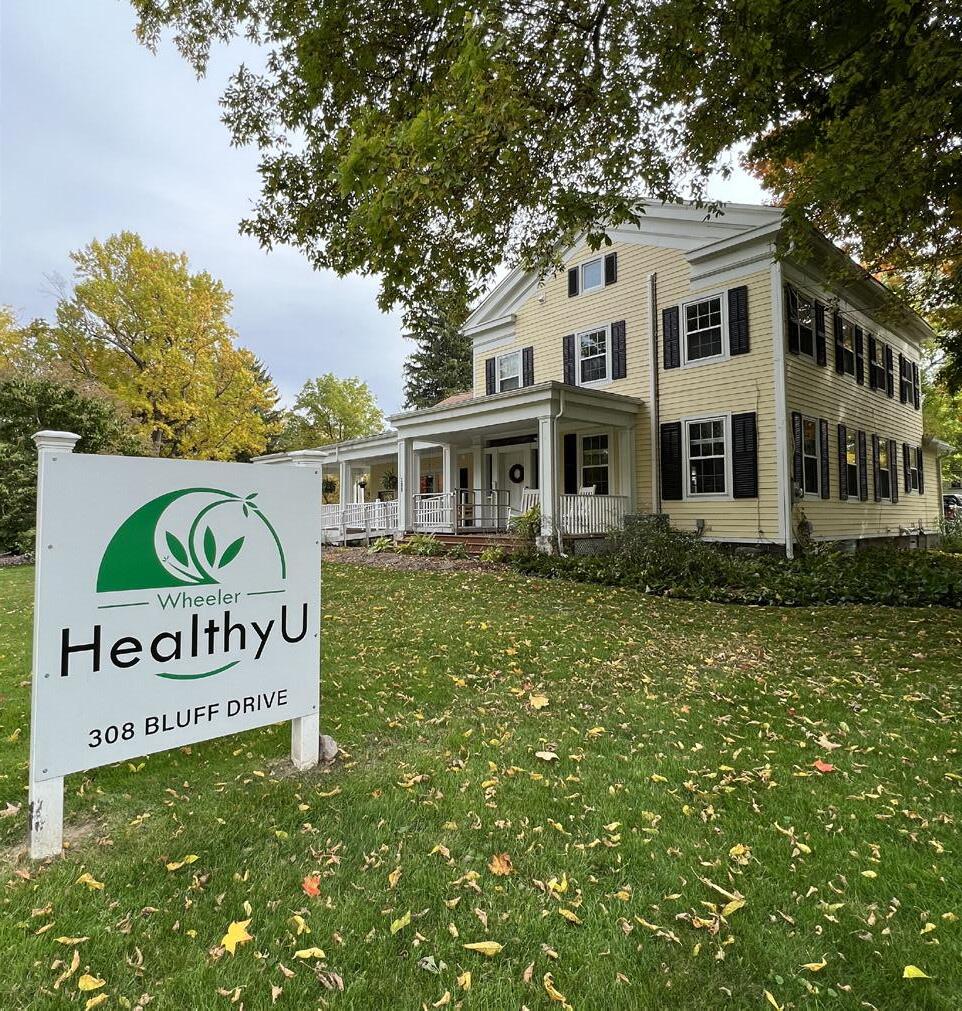
© 2023 by Local News, Inc. All rights reserved. P.O. Box 525, Victor NY 14564. Phone: 585-421-8109 • Email: Editor@GVhealthnews.com

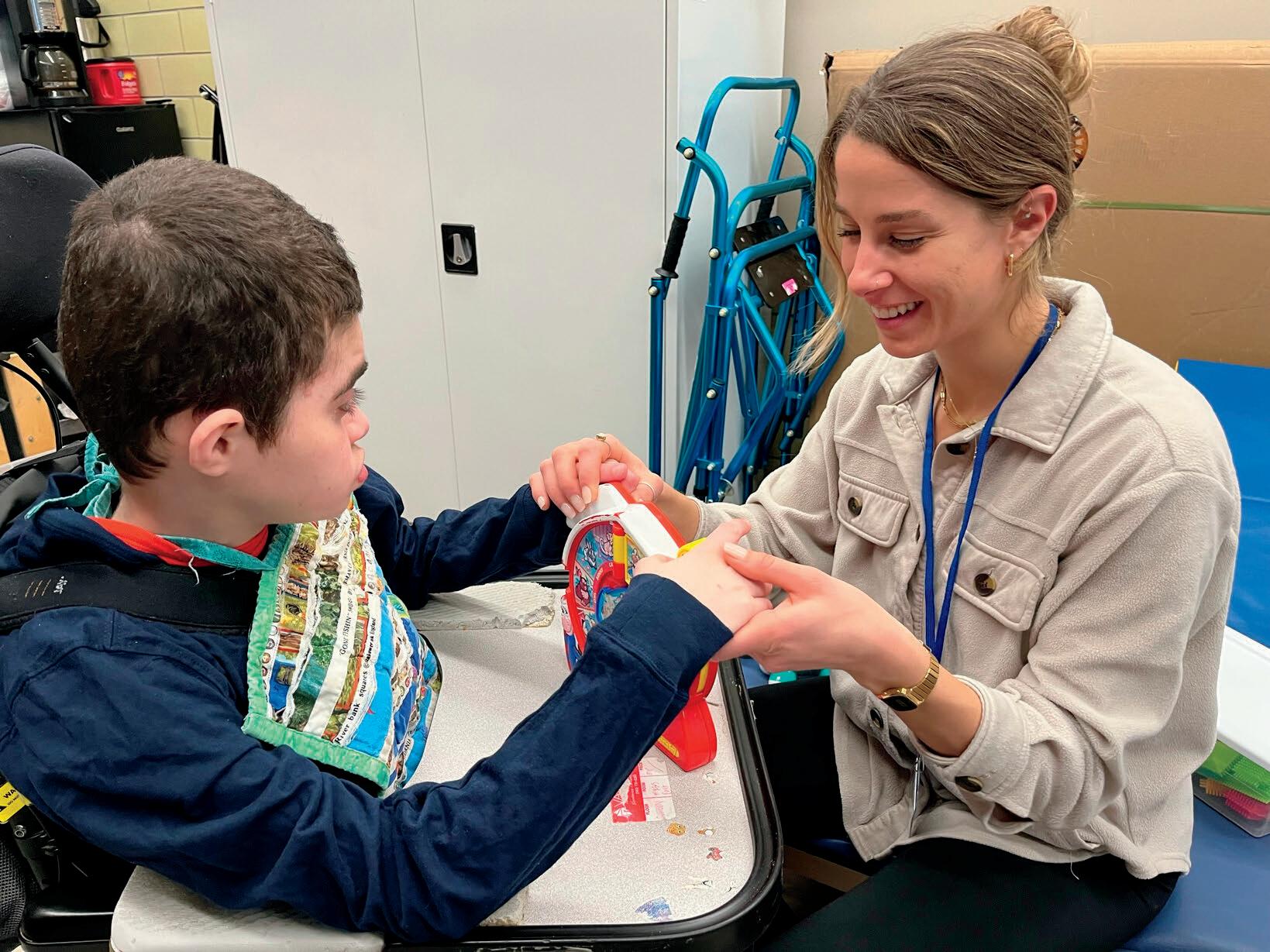

Editor & Publisher: Wagner Dotto Writers: Deborah J. Sergeant, Chris Motola, George Chapman, Gwenn Voelcker, Anne Palumbo, Ernst Lamothe Jr., Jim Miller, Jennifer Faringer, Caitlyn Stoffle
Advertising: Anne Westcott (585-421-8109) • Linda Covington (585-750-7051)
Layout & Design: Angel Campos–Toro • Office Secretary Allisons Lockwood
No material may be reproduced in whole or in part from this publication without the express written permission of the publisher. The information in this publication is intended to complement—not to take the place of—the recommendations of your health provider. Consult your physician before making major changes in your lifestyle or health care regimen.


Men died of opioid and stimulant drugs at a rate two to three times higher than women between 2020 and 2021, according to a recent study. The data looked at fentanyl, heroin, methamphetamine and cocaine.
The study said that men’s higher rates of use do not entirely account for the increase in mortality risk.
The study was published by Neuropsychopharmacology and led by investigators at the Icahn School of Medicine at Mount Sinai in New York City and the National Institute on Drug Abuse (NIDA), part of the National Institutes of Health.
“Though men and women are being exposed to the modern, fentan-
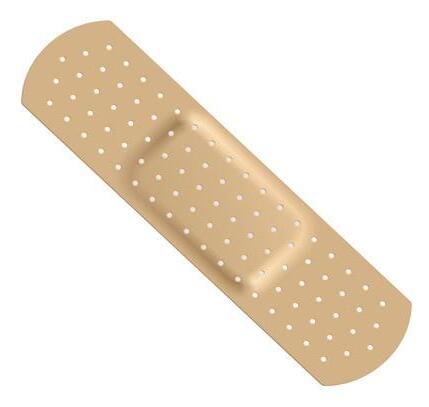

yl-contaminated drug supply, something is leading men to die at significantly higher rates,” said physician Nora Volkow, director of NIDA and one of the co-authors on the study in a press release. “It may be that men use drugs more frequently or in greater doses, which could increase their risk of death, or there may be protective factors among women that reduce their risk of death compared to men.”
The study indicated that further research must be done to determine why more men die from stimulant and opioid overdoses than women.
“We’re still trying to understand the underlying major mechanisms and modified risk factors that could
explain this differential,” said physician Hemant Kalia, managing director at Invision Health in the great Rochester region. “Some things that come to light are maybe some cultural-bound differences where there is a propensity towards risky behavior that can lead to overdose and associated mortality. We’ve seen similar differences in a study that found males are three to four times more likely for motor vehicle collisions. That also goes with that risky behavior propensity. We cannot exclude other biological, behavior, and social factors.”
At Delphi Rise in Rochester, Clinical Director Carla Leaks said that her facility sees 70% men and 30% women; however, many of these are referrals from the legal system as identified with a substance use disorder.
“Thirty-two percent of the men in admission status with our clinic on June 30, 2023, had a primary diagnosis of opioid use disorder, moderate or severe,” she said.

One the same date, “20% of the women in admission status had a primary diagnosis of moderate or severe opioid use. This would suggest that men are using opioids more than women are.”
Leaks thinks that socially constructed beliefs about gender are driving behavioral differences that result in higher overdose rates, with men eager to take risks and look

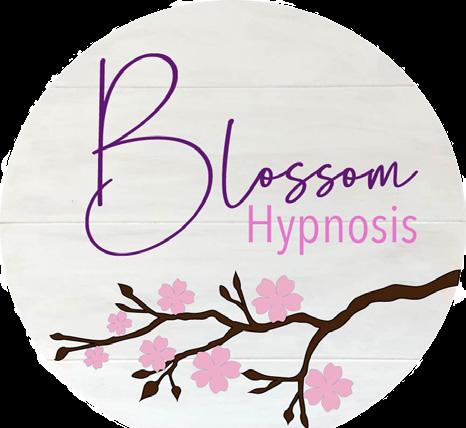
“macho.” There’s also the factor of men eschewing healthy ways of dealing with trauma and stress and turning to drugs.
Leaks said that metabolic differences between men and women may also present a factor.




Evan Frost, assistant director of communications and public information at the NYS Office of Addiction Services and Supports (NYS OASAS) in Albany, said that more than 70% of treatment admissions are male.
“A higher prevalence of substance use disorder in men is not new and has been a steady trend in both New York state and the rest of the country for years,” he said.
As to why more men are dying — especially since they’re entering treatment programs at higher rates — it’s not entirely clear.
Most of the programs OASAS offers are oriented toward men or are men-only, including programs on parenting, relationships in early recovery, anger management, and specialized services for those involved in the criminal justice system.
“In general, we are also addressing opioid overdoses by increasing access to care through low threshold access to medications for opioid use disorder, providing overdose prevention education and naloxone, and providing fentanyl and xylazine test strips so people who use drugs can be informed about what is in their supply,” Frost added.
As marijuana dispensaries begin to open across New York state, some view this as a business opportunity.
However, it’s important to have the facts and and know the potential health risks and impact on our communities, our families and our youth. Legal does not equal safe. Marijuana remains an addictive drug.
With the legalization of marijuana comes a corresponding decline in the perception of risk which has been shown to result in an increase in use, especially among youth. Marijuana is often the first drug teens try, but it is typically not the last.
• While teens report using marijuana to cope with anxiety and depression, more and more studies are showing that using marijuana only worsens both.
• Smoking or vaping marijuana damages lung tissue similar to tobacco use. Studies have also shown that marijuana decreases the body’s ability to fight infection thus weakening the immune system.
• With the potency of tetrahydrocannabinol (THC) in marijuana increasing from 1% to 4% in the 1960s to now 20% to 90% (as found in concentrated forms), the risk increases.
The effects of marijuana when ingested are not felt as quickly as when smoked or vaped. For those ingesting edibles intentionally, this delayed reaction often leads to taking more to feel the expected effect and may result in effects ranging from drowsiness and lethargy to loss of muscle coordination, agitation and irritability, and confusion.
Edibles continue to be a growing concern as reports point to increasing instances of pediatric poisonings due to children accidentally ingesting marijuana-laced food products and


candy which are often packaged in a way that can be indistinguishable from actual food products. With children under age 3, the impacts of pediatric poisoning are often critical and may include respiratory depression and seizures.
There is also a risk to public safety when we consider the probable increase in drugged driving. Driving while impaired is illegal no matter what substance is being consumed. In New York, it is illegal for both the driver and passengers to use marijuana. Individuals under the influence of marijuana may feel focused and in control, but are instead experiencing narrow fixation of focus, a decrease in peripheral vision and a slowed reaction time. After alcohol, marijuana is the most frequently identified drug in deadly crashes. Impaired or drugged driving jeopardizes the safety of all who travel on the roads and highways.
As marijuana potency increases, the risk of becoming addicted has also increased. It is no surprise that marijuana is often the number one reason teens seek treatment. Despite legalization, marijuana remains an addictive drug with health risks.
For more information and a wide range of resources for parents and the community, visit the website awareness page at: https://ncaddra.org/resources/awareness-campaigns/marijuana .
To schedule a presentation contact jfaringer@depaul.org.
Jennifer Faringer is director of the National Council on Alcoholism and Drug Dependence –Rochester Area. She can be reached at jfaringer@ depaul.org.

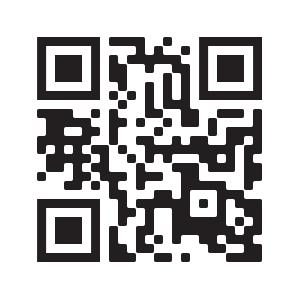


If you are struggling with your loved one’s addiction, Vanessa can help. She can also provide support for anyone struggling with life changes and depression.
“I work hard to help my clients overcome the minimization they have experienced when they’ve tried to have their struggles heard by others.”

Teens seem to be getting the message on the dangers of smoking cigarettes; however, tobacco use is going up.
“It’s an interesting phenomenon,” said physician Francisco Cartujano, who serves in Community Outreach & Engagement at URMC, as well as completing research on smoking and vaping cessation with teens and young adults. “Tobacco use was declining, but with e-cigarettes, there was complete turnaround. That accounts for those high percents.”
Part of the reason for the upswing in use is that teens perceive e-cigarettes as safer than incendiary cigarettes. Originally, they were marketing as a tool for smoking cessation.
“There’s not enough evidence to say that’s true,” Cartujano said. “I think those messages don’t help.”
Since e-cigarettes emit vapor, it seems safer than smoky cigarettes. The appeal of the sleek device, which often looks like a USB flash drive, also attracts teens.
“There’s a lot of marketing behind the branding and marketing and colors and flavors,” Cartujano said. “You pretty much name the flavor you’re interested in and you’ll find it.”
The US Food and Drug Administration banned fruity vaping liquids in 2020; however, the ban covered only flavored cartridges and pods, not tanks or disposable flavored e-cigarettes.
Research from the department of public health sciences and Center for Community Health and Prevention at URMC indicates that e-cigarettes is associated with chronic obstructive pulmonary disease, cardiovascular disease and cancer. And that’s without long-term studies on their health effects.
Deborah Ossip, professor and researcher from URMC, stated in a US News & World Reports article in December 2022 that nicotine changes
brain development in young people.
“One of the really sobering sets of findings about the dangers of e-cigarettes is that many diseases take a long time to develop,” Ossip said in the article. “Lung cancer might take 20 years to develop, and e-cigarettes haven't been around that long, and even at this early stage we're still starting to see some relationships and increased risk of some of these diseases.”
Most of the vaping liquids on the market are sourced from companies that use less stringent consumer safety standards then the US.
“It’s important that the message embraces the lack of regulation,” Cartujano said. “That should concern us. What’s inside those liquids is not fully disclosed.”
Prevention is obviously better than quitting. Parents need to take the lead by setting a good example and not using substances themselves. It may seem like teens want to be anything but like their parents, but the parental example ingrains in children early on what is acceptable behavior.
The peer group also matters.
“When they survey teens to ask why they started, it’s because their friends were vaping,” said Holly Russell, family medicine physician at Highland Family Medicine and medical director of UR Medicine’s Center for Community Health & Prevention. “It’s old-fashioned peer pressure. The second reason is curiosity. They wanted to try to see what it’s like.”
She advises parents to talk with kids before they start using by asking what they know about vaping and the myths about it. Approaching the topic as a curious parent can allow tweens and teens to feel you give them credit for what they know.
“‘Just say no’ doesn’t work well,” Russell said. “The reason teens first use is it’s around them.”
Teens typically vape because they feel it will help them de-stress.

According to the CDC, in 2021, an estimated 34.0% of high school students (5.22 million) and 11.3% of middle school students (1.34 million) reported ever using a tobacco product. In 2022, approximately 11.3% of all students (representing 3.08 million) reported currently using any tobacco product, including 16.5% of high school and 4.5% of middle school students. In 2020, current use of any tobacco product was reported by 16.2% (4.47 million) of all students, including 23.6% (3.65 million) of high school and 6.7% (800,000) of middle school students.
For this reason, Russell said it’s vital to promote healthy ways of managing stress and to avoid over-scheduling and heaping up unrealistic demands. Teens need down time as well as adults.
Lisa Nichols, lifestyle counselor at UR Medicine’s Center for Community Health & Prevention, also said that vaping is a social activity. The pandemic may have helped decrease teen vaping slightly, as the peer pressure to vape and a lot of the social anxiety and pressures of peer groups were paused.
Like Russell, she advises “having conversations. Get to know why your teens are interested in vaping. Is it curiosity? It will help keep them open to having more conversations.”
One fact important to bring up is the myth that nicotine relieves stress. Nichols said that biologically, it creates stress because the chemicals in vape liquid are not approved for inhaling into the lungs.
Edward Lewis, pediatrician at Lewis Pediatrics in Rochester, favors starting early in talks about tobacco. Even middle school is not too early. But despite this “teens feel like they’re invulnerable. You see commercials with people who have had their larynx removed because of cancer but the teens see them as ‘old people’ and teens still feel invulnerable.”
Although banning flavored vaping liquid is a good step, Lewis said that even an outright ban on all vaping products would not make these products go away.
“You need to pay attention to your kids and be a part of their lives as long as you can because the time that you get to spend with your kids is relatively short,” he said. “You need to impart good values and make sure they’re healthy as possible.”
Screening adolescents to assess use and risk of use represents another means of reducing use. But this only happens if children are seen for well child visits or other doctor’s visits.
“We typically use social screenings that assess home and school life, activities, strengths, emotions, drugs, sex, and safety,” said pediatrician LeKeyah N. Wilson, medical director of Community Pediatrics and Wellness and of School Based Health Centers for Rochester General Pediatric Associates. “Some adolescents are comfortable discussing these topics confidentially. We also utilize our training in screening, brief intervention, and referral to treatment.
“We also include tobacco and nicotine use prevention as part of the anticipatory guidance for children and adolescents. The US Preventive Services Task Force (USPSTF) recommends in its 2020 recommendation statement that pediatricians provide education or brief counseling to prevent initiation to tobacco use among school-aged children and adolescents. There is ongoing research on smoking cessation in adolescents and the perceived risk association with tobacco use. There are many different levels of advocacy towards use prevention. Anecdotally, I have seen an increased number of my adolescent patients that disclosed that they have tried or use tobacco products. Tobacco products include but are not limited to cigarettes, cigars (Black and Milds), and Hyde vapes.”
She encourages parents to talk with their children about the dangers of vaping. For example, a Hyde vape contains about 1.8 ml. of liquid, which equals 25-50 mg. of nicotine. That’s equal to one pack of cigarettes.
“Generally, the nicotine concentrations are higher in vapes than a cigarette,” Wilson said. “Our children don't know what they are inhaling. Many adolescents don't associate tobacco with vaping. As parents and influential adults in our children's lives, we must educate them about the dangers of tobacco containing products and the health consequences associated with the use of With adolescents, it is recommended to focus on the immediate impacts versus long term.”
As Lewis found, most teens cannot envision themselves as old and sick.
“Immediate impacts could include coughing, wheezing, chest pain, and shortness of breath,” Wilson said. “This could affect your ability to participate in sports or activities.”
Q: How does hypnosis work?
A: Hypnosis is simply a relaxed state of mind where the subconscious mind becomes highly receptive to the suggestions offered. By relaxing with the induction method (focusing attention), you shift into a state that allows your conscious mind to be bypassed so that the subconscious mind can retain the suggestions.
Q: What are the more common issues that are treated with hypnosis and how successful is treatment?
A: PTSD, anxiety, phobias, stress, depression, low self-esteem, weight loss, addiction to drug, alcohol and cigarettes are common issues that have very effective outcomes. We work to release any trauma first as it is the underlying cause of many kinds of addictions and behavioral health issues. The subconscious mind then becomes an internal adviser to cope with these issues. I have treated a variety of phobias, especially fear of public speaking. When the phobia is released from the subconscious mind, clients are able to make presentations and
give speeches at their respective work places. Other treatable issues include OCD, procrastination, hair pulling, nail biting, insomnia, and pain management.
Q: How do you determine if someone is a good candidate for hypnosis?
A: During the consultation, a pretalk on hypnosis and a suggestibility test is conducted to determine if the client is a good candidate.
Q: What does the first session look like?
A: A free consultation is offered in the first session which identifies the areas that need to be addressed. Individualized treatment plans are designed to work on the underlying issues. I have helped hundreds of clients who felt that traditional talk therapy did not work.
Q: How do people hear about Blossom Hypnosis? Do physicians refer patients to Blossom Hypnosis?



A: Several local physicians believe in the effectiveness of alternative
medicine and refer their patients to Blossom Hypnosis. Many referrals are provided by satisfied clients. Also, I provide blog posts on this website - cognitivehealing.com - and a contact form is available.

Q: How does Blossom Hypnosis provide quality to the clients?
A: Blossom Hypnosis is founded by myself, Rekha Shrivastava. I have a master’s degree in psychological development and am a certified rehabilitation counselor and a certified hypnotist. With over 20 years of experience in cognitive behavioral therapy, I provide tailored treatment plans to meet the individual needs of clients. Successful treatment is evidenced by over one hundred testimonials available on blossomhypnosis.org
Q: How can I schedule a free consultation?
A: Call 585-281-2988 to schedule an appointment or visit the website and complete the Contact form. You will receive a phone call or an email within 24 hours.
Q: Who has access to Blossom Hypnosis services?
A: Both online and in person sessions are available. I work with clients in the U.S., and globally including Canada, India, Malaysia, Dubai, Germany, and Australia.
Rekha Shrivastava, MS, is a certified hypnotist and certified rehabilitation counselor. “I have helped hundreds of clients who felt that traditional talk therapy did not work, she says.


Frank chose non-surgical CyberKnife® at HOA –offering 5 treatments instead of 35!
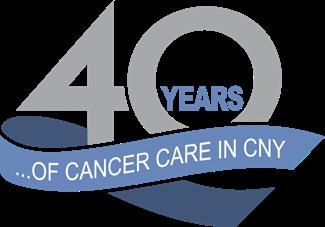
“The original diagnosis was to treat my prostate cancer with seven weeks of radiation, five days a week. I was kind of upset that I was never given the option of CyberKnife,” said Frank. “The precise radiation achieved by CyberKnife, far fewer treatments, and the personalized care I received from Dr. Chin and his team made my decision an easy one. Better, the treatment was a real success!”
To hear more of Frank’s story and learn if CyberKnife is right for you, visit hoacny.com
If you’re watching your cholesterol, you may be wary of eating shrimp. Next to squid, shrimp has more cholesterol than any other seafood, which depending on your intake can put a serious dent in your recommended amount. We’re talking up to 200 milligrams per average serving. Although I have high cholesterol, I continue to eat shrimp, maybe three or four times a month, swayed by the research from Harvard School of Public Health, which asserts that the biggest influence on blood cholesterol levels is the mix of fats and carbs in your diet — not the amount of cholesterol you eat from
food. While some foods do earn cholesterol red flags — think high-fat baked goods, meats high in saturated fats, deepfried foods — shrimp does not.
That’s because shrimp contains minimal saturated fats and negligible carbs. (Of course, red flags go up whenever shrimp is fried or

Adapted from deliciousmeetshealthy.com Serves 6
1 lb. raw shrimp, peeled and cleaned
2 tablespoons olive oil
1 tablespoon lemon juice


1 teaspoon minced garlic
1 teaspoon regular or smoked paprika
1 teaspoon cumin
1 teaspoon onion powder
1 teaspoon kosher salt
½ teaspoon coarse black pepper pinch of red pepper flakes (optional)
1.Thaw shrimp in a bowl of cold water for 20 minutes.
2. Mix together olive oil, lemon juice, garlic and spices in a large bowl. Add shrimp, mix until coated, and let shrimp sit for 30 minutes.
3. Preheat the grill to medium-high; oil the grates.
4. Thread the shrimp on skewers and grill for 2 to 3 minutes per side, until shrimp are opaque. Serve immediately.
served with a rich sauce.) Experts agree, however, that it remains important to monitor the amount of cholesterol you eat, especially if you have heart disease, diabetes or “respond” to dietary cholesterol in a way that most people don’t. So, is America’s most popular seafood healthy?
Yes, says the Acade- my of Nutrition and Dietetics, shrimp teems with beneficial nutrients. When it comes
to low-calorie protein, shrimp is a superstar, with an average serving delivering about 25 grams of protein for only 135 calories. A workhorse nutrient, protein is an essential for tissue repair, muscle building, weight maintenance, and more. What’s more, shrimp boasts a unique mix of nutrients that supports brain health. From its omega-3s to its antioxidants to its vitamin B12, all contribute to keeping our memories sharp, our moods bright, and our thinking clear. Lastly, this sweet crustacean is one of the best food sources of iodine, an important mineral for proper thyroid function and brain health.
Anne Palumbo is a lifestyle columnist, food guru, and seasoned cook, who has perfected the art of preparing nutritious, calorie-conscious dishes. She is hungry for your questions and comments about SmartBites, so be in touch with Anne at avpalumbo@aol.com.
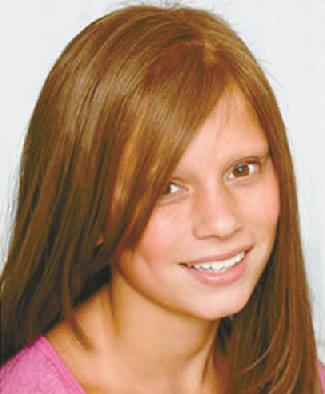

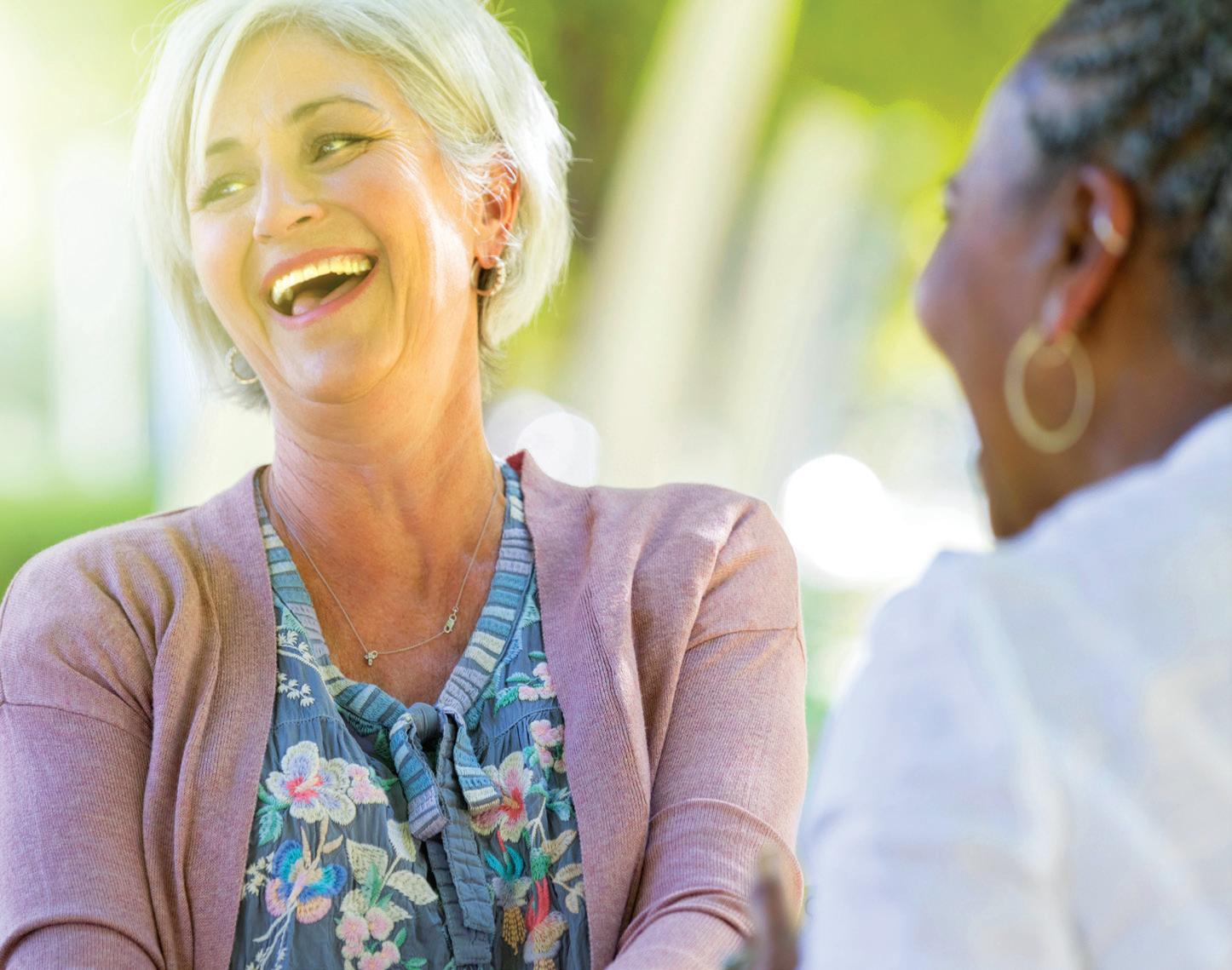

Fresh? Frozen? Farmed? Wild? Selecting the freshest, safest shrimp can be daunting! But here’s what the experts say: Unless you’re absolutely sure that the “fresh” shrimp at the counter are truly fresh-off-the boat, frozen shrimp are a better bet. Since there’s no way to know how long the “fresh” shrimp on display have been allowed to thaw, you’re better off buying frozen and thawing them at home. If you’re concerned about antibiotics in shrimp, it’s best to select wildcaught shrimp, which is never treated with antibiotics. Rest assured that shrimp caught and prepared in the United States does not contain antibiotics.

 By Deborah Jeanne Sergeant
By Deborah Jeanne Sergeant
From coffee to soda to energy drinks and energy shots, teens have plenty of options to get a burst of energy.
Terry Ratzlaff writing for The New York Times stated that energy drink sales in the US have swelled from $12 billion to $19 billion in the past five years.
But drinking these in excess can mask health problems and cause still other health issues among teens.
Steven A. Schulz, a physician with Rochester Regional Health and pediatric medical director of Primary Care and Ambulatory Specialty Institute, listed sleep disturbances as one of the effects caffeine can have on teens.
“It can make it harder for them to fall asleep or stay asleep which leads to daytime tiredness and impaired concentration,” he said.
Caffeine can also affect heart rate and blood pressure. Schulz said that it stimulates the nervous system and can potentially affect cardiovascular health and lead to heart palpitations. Caffeine can also affect behavior, especially of tweens and younger teens.
“Caffeine is a stimulant that can make kids more hyperactive, jittery, and restless, affecting their ability to focus and concentrate,” Schulz said. “It can also increase anxiety and irritability and lead to tremors.”
Some teens reach for a cola or energy drink to replenish themselves while working out or playing sports. Many of these beverages contain high levels of sugar or artificial sweeteners.
“There can be additional negative impacts to physical and dental health,” Schulz said. “Caffeine can also lead to nausea, dizziness, and even vomiting and diarrhea in large amounts.”
The latest versions try to spin a healthier image for energy drinks, such as Celsius, which is made with things like ginger, green tea and vitamins. There’s also Prime Energy, a sugar-free drink with electrolytes, supplements—and a whopping 200 mg. of caffeine per 12-oz. can, equivalent to two 8-oz. cups of black
coffee. Many parents confuse this beverage with the caffeine-free Prime Hydration, a sports drink.
This year, longtime sports hydrator Gatorade introduced Fast Twitch, a fruity, sugar-free drink that offers even more caffeine.
To consume all of this caffeine, teens must drink a 12-oz. energy drink; however, energy shots are highly concentrated sources of caffeine, yielding 250 mg. of caffeine in only two ounces. It’s easy for teens to overdo since they can easily drink six servings or more of energy shots in a single sitting.
Because energy shots are classified by the FDA as supplements, they don’t fall under the same guidelines as food. The effect of the excessive supplements is not known.
Drinking these beverages can cause further dehydration as caffeine is a diuretic, meaning that it causes the body to create more urine. Instead of these drinks, Mary Beer, director of Ontario County Public Health, reminds people to “stay hydrated. Increase your water intake. Don’t wait until you feel thirsty to drink. If working or playing outside, you will need two to four cups of water an hour to keep your body temperature normal and to avoid dehydration. Take frequent breaks in the shade. It is best to avoid sugary beverages, alcohol and caffeine.”
Many teens drink caffeinated beverages because they want to improve their performance at school and sports and because they feel tired.
Instead of allowing them to drink these beverages, Edward Lewis, pediatrician at Lewis Pediatrics in Rochester and clinical professor of Pediatrics at University of Rochester School of Medicine, wants parents to teach their kids healthy habits. “Just be there and talk with them. Pay attention to what they’re doing. It keeps getting more complicated with activities and kids striving to be the best at everything. Let kids know they don’t have to be good at everything but just enjoy what they’re doing. A lot of it is being around
Children with autism have wellknown difficulties with social interactions, but a new study is highlighting another area where they can struggle: memory.
Researchers found that compared
with their peers, school-age kids with autism showed more difficulty managing memory tasks. They often had a hard time remembering faces — something seen in past studies — but also in recalling words and other
for your kids. A little bit of parental observation goes a long way. Don’t overschedule your kids. They need downtime,” he said.
Teens need about eight hours sleep or more per night.
To parents accustomed to their two cups of coffee per day, it may seem extreme to call caffeine a “gateway drug to using other forms of stimulants” as Lewis put it, but the high dosage in energy shots and drinks has upped the ante for teens desperate to stay awake.
“We see kids when they hit college and graduate school where there’s a lot of pressure,” Lewis said. “They go from caffeine to seeking
out other stimulants like Adderall and Ritalin to use as performance enhancing drugs when they’re not indicated.”
It’s a tough habit to kick as teens can fall into the cycle of relying on caffeine to stay awake all day, staying up too late, and then needing caffeine to get through the next day. Plus, caffeine withdrawal causes headaches.
The FDA’s guideline for maximum daily caffeine for adults is 400 mg. Most pediatricians agree that children younger than 12 should not consume caffeine. Those 12 to 18 should limit consumption to 100 mg. daily.
types of information.
What's more, the researchers were able to trace the memory deficits to particular brain circuitry that was "hyperconnected."
The findings suggest that memory challenges may be a bigger issue for kids with autism than generally recognized. And that should be taken into consideration at school and in services for those children, the researchers say.
Kids with "high-functioning" autism often go to mainstream schools and receive the same instruction as
their peers, said lead author Jin Liu, a postdoctoral researcher at Stanford University School of Medicine, in California.
But, she said, the new findings suggest that even though those children may have high IQs, they can still struggle with memory issues.
"So they may need extra help," Liu said.
The new study was published July 10 in Biological Psychiatry: Cognitive Neuroscience and Neuroimaging.
Returning to school can be an exciting and challenging time for any child, but it can be particularly daunting for neurodiverse children. As a parent, it is crucial to provide the necessary support and guidance to ensure a smooth transition for your child. In this article, we will explore some practical strategies and tips to help you support your child as they go back to school.

1. Open Communication with School Staff:
Establishing open lines of communication with your child's school is vital. Reach out to the teachers, counselors, and administrators to discuss your child's unique needs, challenges, and strengths. Share any relevant information or updates regarding your child's condition, therapies, or medications, which will help create a supportive environment.
2. Visit the School in Advance:
If possible, arrange a visit to the school before the term begins. This visit can help familiarize your child with the school environment, classrooms, and playground, reducing anxiety and promoting a sense of familiarity. Meet with the teacher and discuss any concerns or accommodation that might be necessary.
3. Review and Adjust Individualized Education Program (IEP):
If your child has an IEP or a sim-
ilar plan in place, review it together with the school staff. Ensure that the plan reflects your child's current needs and goals. Discuss any necessary adjustments or modifications to ensure that your child receives appropriate support.
4. Establish a Consistent Routine: Children with special needs often thrive in structured and predictable environments. Create a consistent daily routine that includes specific
If you have a child with asthma, now is the time to revisit their asthma action plan so you are prepared for the annual increase in asthma attacks that occurs each year as kids return to the classroom.
A dramatic rise in the number of asthma flare-ups occurs each year from late August through the end of September, according to a review of public health records by Excellus BlueCross BlueShield.
“The annual spike is caused, in part, by kids being exposed to more germs once they return to school,” says physician Lisa Y. Harris, senior vice president and chief medical officer at Excellus

BCBS. “It’s also the peak time of year for mold and pollen, which can trigger airway inflammation that can launch an asthma attack.”
Harris, who is boardcertified in internal medicine and pediatrics, advises parents to use the final weeks of summer to make sure that prescribed asthma control medications are being used as directed, and that a doctor’s note is on file with the child’s school so that a supply of those medications can be kept there in case of an emergency.
Parents should also use these last few weeks of summer to consult with their health care provider to develop or update their child’s asthma action plan. This is a writ-
times for waking up, getting ready for school, meal breaks, homework, and leisure activities. A structured routine can provide your child with a sense of security and stability.
5. Social Stories and Visual Supports:
For children who struggle with transitions, using social stories and visual supports can be immensely helpful. Social stories are simple narratives that describe social situations and appropriate responses. Visual supports, such as schedules, calendars, or visual cues, help children understand and anticipate daily activities. Work with your child's teacher to develop personalized social stories and visual supports that cater to their specific needs.
6. Foster Collaboration with Peers:
Encourage positive social interactions and friendships with peers. Speak with the teacher about opportunities for your child to engage in group activities or projects with classmates. This collaborative approach promotes inclusivity, enhances social skills, and provides a support network for your child.
7. Address Anxiety and Emotional Support:
Returning to school can trigger anxiety or emotional challenges for your special needs child. Maintain an open line of communication with your child, providing a safe space for them to express their concerns or fears. Teach them self-regulation techniques, such as deep breathing exercises or mindfulness activities, to manage stress and anxiety effectively.
8. Advocate for Accommodations and Support:
If your child requires specific accommodation, make sure to advocate for their needs. Stay informed about your child's rights and the available support systems within the school and the community. Collaborate with the school staff to ensure that appropriate accommodations, such as additional time for assignments or modified curriculum, are provided.
9. Encourage Independence and Self-Advocacy:
Promote independence by gradually encouraging your child to take ownership of their education. Teach them self-advocacy skills, such as asking for help or expressing their needs to teachers or peers. Building their confidence and independence will empower them to navigate challenges more effectively.
10. Celebrate Progress and Stay Positive:
Acknowledge and celebrate your child's achievements, no matter how small they may seem. Recognize their efforts and progress, reinforcing positive experiences associated with school. A positive and supportive attitude will go a long way in helping your child adapt to the school environment.
Supporting your child's transition back to school requires collaboration, communication, and understanding. By implementing the strategies discussed in this article and working closely with the school, you can create an inclusive and supportive environment where your child can thrive academically, socially, and emotionally. Remember, every child is unique, and it may take time for your child to adjust. Be patient, flexible, and offer continuous encouragement throughout their journey.
Caitlyn Stoffle is the executive director of Golisano Autism Center. She has a master’s degree in health and health care administration and management from Ashford University. Contact her at cstoffle@golisanoautismcenter.org

• Check with your health care provider to make sure that prescribed asthma medications are up to date and working, and that permissions are in place for their use at school, if needed.

• Make sure your child takes all asthma medications as directed.
• Alert all adults at school and elsewhere who work with your child to recognize the signs of an asthma attack.
• Empower your child to notice and report asthma triggers and signs of a pending attack.
ten plan that details a child’s daily asthma treatment including which medicines to take and when, and the child’s specific attack triggers. The action plan also explains how to identify when the child’s asthma symptoms are severe enough to contact the provider, or to take the child to urgent care or a hospital emergency room.
“All adults and schools or other sites that care for a child with asthma should have a copy of the asthma action plan and understand their responsibilities regarding the child’s care,” says Harris.
• Prevent the spread of germs by encouraging proper handwashing, social distancing, and making sure that every family member is current on all recommended vaccinations, including the annual flu shot.
Visit www.health.ny.gov/ publications/4850.pdf for a free New York state asthma action plan template.
Submitted by Excellus BlueCross BlueShield
saying, ‘Get it done’ is overwhelming,” she said. “But saying, ‘Get this page done’ and then giving them something to do that moves their body, like throwing the basketball or jumping jacks or something the child enjoys, can help them stay on-task.”
Although a traditional homework set-up is a desk and chair in a quiet room, if another position helps, roll with that. Milne-Wenderlich said that some children prefer sitting on an exercise ball, where the wobbly posture lets them wiggle. Or, standing to complete work at the kitchen counter.
“They might want to listen to soft music while they do their work,” she added. “It’s hard to do those things in a school setting but you can be more flexible at home.”
Some children like blocking out ambient sound with white noise to sharpen their focus.
 By Deborah Jeanne Sergeant
By Deborah Jeanne Sergeant
Attention deficit hyperactivity disorder is a lifelong neurodevelopmental disorder that is typically diagnosed by age 12 (although children are born with it). About 4% - 12% of schoolchildren have ADHD. As any parent of a child with ADHD realizes, it causes “trouble paying attention, controlling impulsive behaviors (may act without thinking about what the result will be), or be overly active,” according to the Centers for Disease Control and Prevention website.
Understandably, settling in for a long session of homework is tough for these children — and the parents who are trying to get this to happen.
Christopher J. Dailey, superintendent of schools for Gates Chili Central School District, suggested keeping a close watch on what homework is due.
“Check the child’s assignment notepad or the teacher’s webpage daily,” he said. “Have a calendar of when assignments are due and incrementally work on long-term assignments.”
It’s much easier to complete individual part of a project instead of trying to tackle the whole thing at
once.
“Teachers and principals are willing to partner with parents with open lines of communication,” Dailey said. “Take advantage of curriculum nights offered by schools and teachers.”
Teachers and school administrators want to see their students succeed in their education, both at school and at home.
“One way that parents can be really helpful is make sure they have a specific place to do schoolwork that is not full of distractions,” said Andrea Milne-Wenderlich, a physician at UR Medicine Golisano Children’s Hospital. “But it should also be a place where parents can help keep them on task and attentive to what they need to do.”
Consider a room that has no TV and a reduced amount of activity is ideal. A reading nook with a lap desk may be suitable. Sometimes, finding the right spot relies upon the time of day, such as the kitchen outside of mealtimes.
Milne-Wenderlich suggested breaking homework into smaller chunks.
“Giving them homework and
All diagnosed children qualify for a 504 plan, which accommodates their disability at school. Some children with ADHD qualify for an individual education plan, which parents can discuss with their dis-
trict’s special education department. The IEP can provide helpful resources and services.

Milne-Wenderlich also advised discussing ADHD with the child’s healthcare provider.
“Remember that ADHD is not just a school problem; it’s going to affect all the aspects of their life,” she said. “Try to remember that and don’t get frustrated. The child isn’t trying to misbehave; it’s part of how their brain works.”


Band-Aids,” Youmans said. “There are complex needs for all kinds of things.”
She listed Type 1 diabetes, propensity for seizures and children who take maintenance medications as a few of the issues that school nurses help manage every day.

“A lot of kids need medication,” Youmans said. “Nurses are responsible for getting orders through the doctor and making sure their paperwork is up to date and being a liaison with the family about the amount of medications they take at the school.”
School nurses also help track the state-mandated immunizations and required physician screenings for school athletes. They perform hearing and vision screenings. For children whose families cannot meet these needs, school nurses work to find resources like clinics.
The shortage of nurses in the hospital setting represents a longstanding concern for the healthcare industry. It has also affected school nursing positions.
“We are always hiring,” said Christopher J. Dailey, superintendent of schools for Gates Chili Central School District.
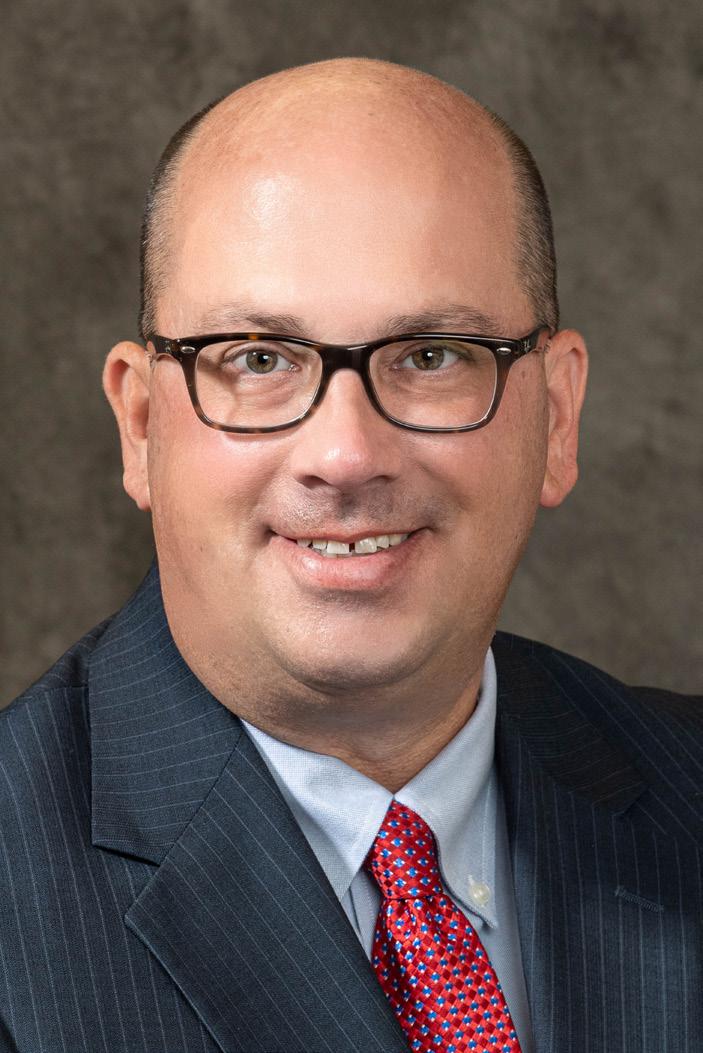
He suspects that the reason for the shortage is that many nurses “can make significantly more working in private practice.”
According to the Bureau of Labor Statistics, the median annual wages
for hospital nurses is $78,070; school nurses make only $61,780.
But school nurses enjoy a few perks.
“Many choose to work in schools due to the 10-month calendar and breaks when their children are off,” Dailey said.
Hospital nurses usually work irregular shifts and hours and are often called upon to work longer shifts.
He views school nurses as “the frontline with keeping students and staff healthy and ready to learn,” he said.
It’s only natural to feel like you want to belong to and contribute to your community. For adults with developmental and intellectual disabilities, The Arc Ontario in Canandaigua provides services that can help them reach goals of employment and living more independently.
“We look to support people to achieve their best life,” said JoEllen Schaefer, family support and intake coordinator.
This can include providing coaching and mentoring to volunteer and work at a paid job. The first step is finding out what the individual is interested in. Schaefer said that involves understanding the person’s hopes and dreams along with support needs.
“We look to create a plan and do our part to support a person with whatever goal they’re looking for
and whatever service we can offer that will support their life,” she said.
The Arc’s community pre-vocation program allows participants to volunteer at different places of employment and take programs at colleges to learn what they want to do and gain employable knowledge and skills. Pet Connections is a vocational training program that offers classes for dogs and connects dogs to people with disabilities for animal-assisted activities, animal-assisted therapy and animal-assisted education.
Once they know where their interests and aptitudes lie, participating in Project Search, a 10-month program, is “a fast track to employment,” Schaefer said.
The supported employment program includes placement at jobs throughout the community, including The Arc’s own businesses, Bad
Marquis Youmans, the school nurse coordinator with Greece Central School District, said that her district has openings like everywhere. “There is a need for school nurses. It’s not a profession a lot of people look at. It’s also hard because it’s such a different type of experience. You have to work with kids. The triage skills are different than a hospital.”
The summers off can be challenging because that’s two months’ less pay than elsewhere and the district typically does not have enough seasonal summer positions for everyone. Some nurses work short-term nursing assignments elsewhere during the summer.
The school nurse’s duties are manifold and in many ways are quite different from hospital nursing tasks.
“It’s past applying ice packs and
Dog Boutique, FLX Premier Bottling, Spot On Cleaning, and North Star Café.
“The challenge is that there aren’t a lot of staff at those small businesses,” Schaefer said. “We can’t employ a lot of people. But it’s an example where people in the community pre-vocational programs go for career-related activity. If a job were opened, they can go through the interview process like anyone else.”
In addition, The Arc interfaces with employers throughout the community in helping individuals acquire jobs with an Arc-provided mentor. Businesses pay nothing for the mentor, who accompanies the individual for as long as it takes to achieve an acceptable level of proficiency.
“The mentor fades away so that person is well-trained and feeling confident to carry on in that place of employment,” Schaefer said. “They’re still available, but their role is diminished.”
The supported employment helps participants obtain jobs at and above minimum wage.
The numerous Arc participants who maintain long-term employ-
In addition to these medical issues, school nurses also provide a “safe space” for children’s social and emotional needs. Youmans said sometimes children stop by the nurse’s office just to stay hello or to take a break during an emotionally stressful day.
“A nurse is a big supporter of students, so they know it’s a safe space,” Youmans said.
Children evidence their trust in nurses by asking health questions or bringing up concerns that they may not want to with teachers or at times with their parents such as when a girl begins menstruation during the school day.
“Over the years, I think the role of a school nurse has changed a lot,” Youmans said. “They’re a part of the team within the school system to help students, faculty and staff to help make the whole experience a positive one. They’re there to provide support and help these students in any way they can, not just medically. I’ve been doing it seven years and I love it.”
Previously, Youmans worked at Rochester Regional Health.
ment are a testament to the program’s success — and the capacity for people with disabilities to work in the community.
“Everybody wants to live their best life,” Schaefer said. “Sometimes we need support to make those dreams come true. Being a productive member of your community benefits everyone you touch.”
In the current economy, where staffing is tough for employers, Schaefer thinks that the population she serves represents an often-overlooked source of capable, competent and willing workers.
“We have beautiful feedback on people we’ve placed in jobs,” she said. “The dedication and commitment that the person places on that job really is mentioned time and time again.”
The Arc assists more than 700 participants and their families with services including crisis intervention; day program services for maintain and enhancing skills; Community Learning Center for personal enrichment and volunteering; 16 residential homes; and other supports for independent living.
While COVID-19 no longer takes up headlines, vaccination remains at the forefront of many people's minds.
However, vaccines are farranging and not just important for preventing the disease that spread worldwide. They are critical for protecting both children and adults from a range of diseases.
“They protect people from diseases that could make them very ill and potentially lead to death or lifelong disability,” said physician Ann Falsey, professor of medicine of infectious diseases at University of Rochester Medical Center.
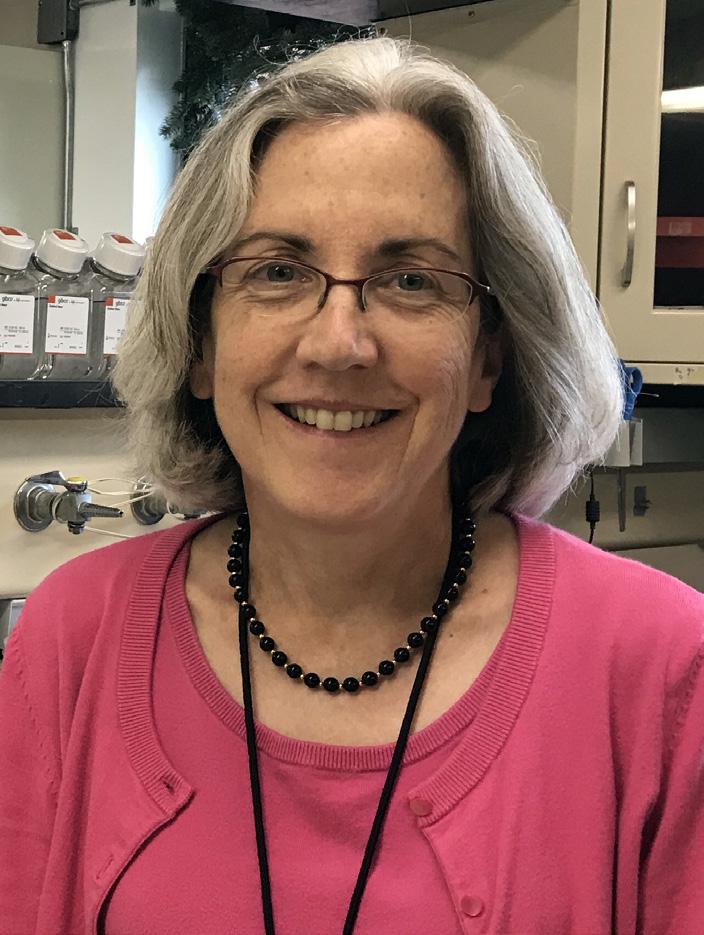
The benefits of vaccination cannot be overstated. Vaccines protect individuals from serious and sometimes life-threatening illnesses, but they also protect communities as a whole by reducing the spread of disease. This is particularly important for individuals who are unable to receive certain vaccines due to medical reasons, such as those who are immunocompromised. Vaccination has been proven to reduce the incidence of many infectious diseases, including measles, mumps, rubella, polio and HPV.
“Vaccines may not be able to completely block transmission of a germ from one person to another, but
every bit of reduction or prevention can help,” said physician Stephen Cook, associate professor of pediatrics at the University of Rochester Medical Center.


The most important vaccines for children include DTaP (diphtheria, tetanus and pertussis), MMR (measles, mumps, and rubella), and HPV (human papillomavirus). These vaccines protect children from serious illnesses and diseases that could lead to complications and even death.
Vaccination continues to be the most effective way to protect individuals from serious and life-threatening illnesses. It is important for both children and adults to receive all the recommended vaccines to protect themselves and their communities. Vaccines are safe and have been thoroughly tested before being approved for use. If you have any concerns or questions about vaccinations, speak with your healthcare provider, according to the physicians interviewed for this story.
“For infants and toddlers, there are a number of very serious and life-threatening infections that we are no longer seeing because of these vaccines. They are very helpful in protecting against the most severe cases of infection,” said Cook. “It
speeds up how quickly someone can become clear of an infection along with protecting others.”
Vaccines remain just as important for adults as they are for children. Many adults need booster shots for vaccines they received as children, such as tetanus, diphtheria, hepatitis, shingles, COVID-19 and pertussis.


In addition, adults should receive certain vaccines based on their age, health status and occupation.
This summer the CDC has made some slight changes to its recommendations for vaccinations. There is an updated vaccine dose for adults 65 and older and additional doses for people who are immunocompromised. This allows more flexibility for healthcare providers to administer additional doses to immunocompromised patients as needed. CDC recommends that everyone aged 6 and older receive an update. For young children, multiple doses continue to be recommended and will vary by age, vaccine and which vaccines were previously received.
“COVID vaccines continue to provide protection against severe disease. People who never had a booster would benefit from a booster. Shots are now updated for variants,” added Falsey. “People at risk for severe illness should get boosters as they become available.”
The U.S. Food and Drug Administration approved Arexvy, the first respiratory syncytial virus (RSV) vac-
cine for use in the United States. Arexvy is approved for the prevention of lower respiratory tract disease. RSV is a highly contagious virus that causes infections of the lungs and breathing passages in individuals of all age groups. RSV circulation is seasonal, typically starting during the fall and peaking in the winter.
“It is very effective to prevent lower respiratory illness in people over 60. Those at highest risk are the very elderly and people with underlying heart and lung disease,” said Falsey.
While nationwide public opinion varies, the medical community touts its success and safety. The process for developing and approving vaccines is rigorous and includes clinical trials and extensive testing to ensure both their safety and efficacy. In addition, the Centers for Disease Control and Prevention has monitoring systems in place to continue tracking vaccine safety even after they are approved for use.
In addition, vaccines do not cause autism. This myth has been perpetuated for years, but multiple studies have proven that vaccines are not the cause of autism. The original study linking vaccines to autism has been retracted and debunked — the overwhelming scientific consensus is that vaccines are safe. Pregnant women should also get vaccinated. Vaccination can protect both the mother and the fetus from serious diseases, such as influenza.
Each year, those who suffer from mental illness turn to the Mental Health Association of Rochester/Monroe County for help in coping with their conditions and living more enjoyable and fruitful lives.
The nonprofit offers its clients peer support, helps them obtain or keep jobs, gives them chances to be creative and provides life skills train-
ing and other services. It also helps families cope with their children’s mental illnesses, provides support groups for the members of specific populations, such as those who identify as LGBTQ and offers clients information on the other mental health services available in the area. It even has an evening drop-in center for those who are in need after hours.
Most of the MHA’s clients have
been diagnosed with a mental illness, but a diagnosis is not required to make use of its services, which are free for clients. The nonprofit, which is affiliated with Mental Health America and the Mental Health Association of New York State, has a budget of about $2.5 million, 45 employees and about 25 volunteers. It has two offices in Monroe County and a third in Ontario County and serves clients in Livingston County as well. Counting clients and their family members, the nonprofit has helped more than 2,000 people in 2022.
In Good Health spoke to Patricia Woods, interim president and CEO about the nonprofit, its accomplishments and challenges. Woods headed the nonprofit for 34 years before leaving in 2018. She returned in February to lead the organization while it searches for a permanent president and CEO.
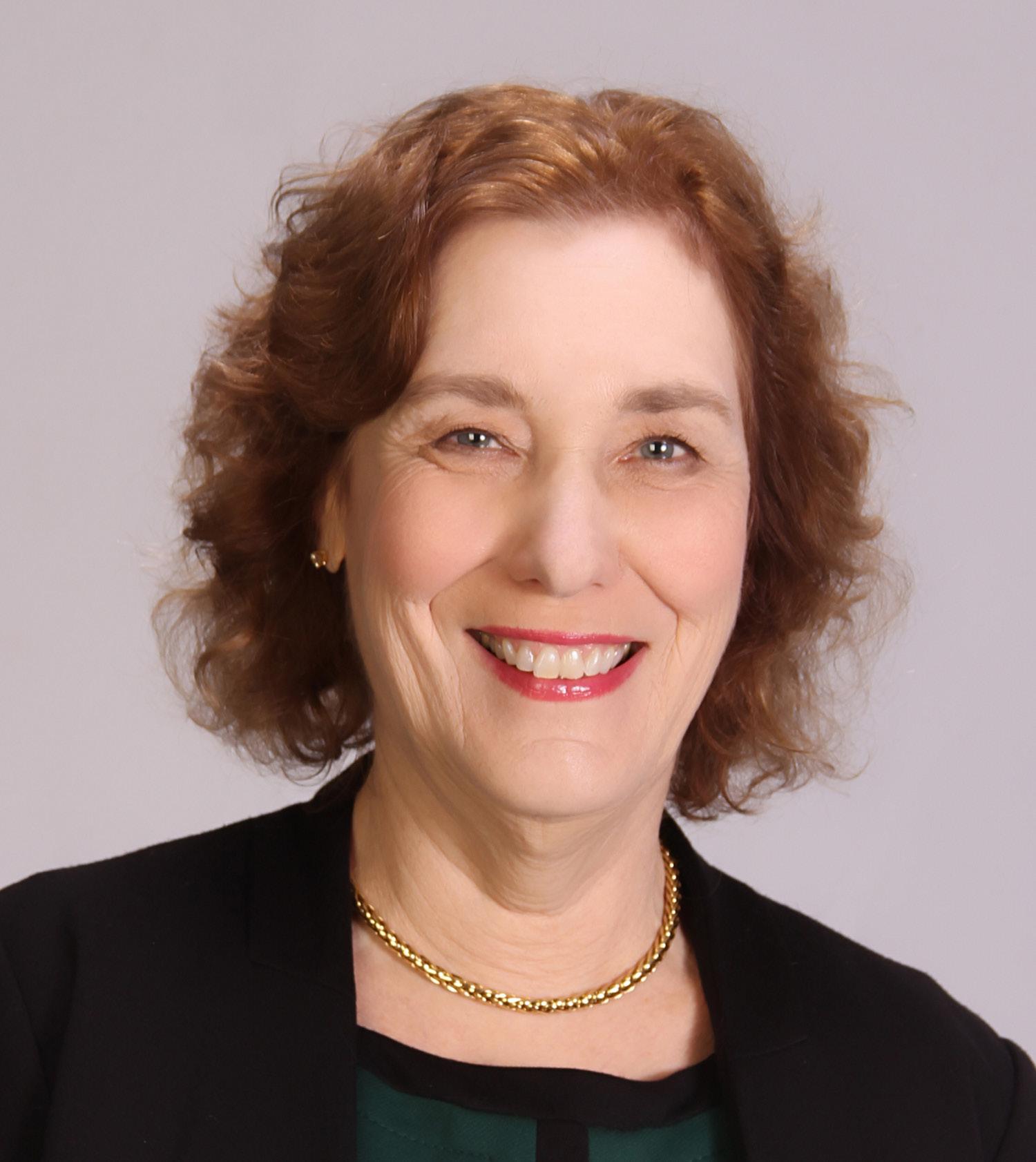
Q: In a few words, what is MHA’s mission?
A: Our mission is to promote mental wellness for all in our community through a spectrum of culturally competent programs and services.
Q: Who does your nonprofit serve?
A: Primarily we serve individuals that have had serious mental illness, people that have been hospitalized for periods of time. We actually have a program where we go into the inpatient units and talk about our services and the community resources that are available to them once they leave inpatient services. We also work with families who have children who have mental health issues. We provide family support for them.
Q: What are some of the diagnoses you often see among your clients?
A: One thing that’s unique about us is that we don’t necessarily ask a person about their mental illness. I’m not going to stigmatize people. We meet the person where they’re at. We also don’t turn you away if you don’t have a diagnosis.
Q: Some of the readers might not have encountered the term “mental wellness.” What does it mean?
A: Basically, mental wellness is the ability to deal with your problems. It’s developing kind of your own wellness plan as to what you’re going to do if you get into a situation where you’re feeling not as strong as you usually do. You understand what your triggers are. You know if you start to get triggered. You kind of have a plan in place. It might just be just getting out of the situation. It might be talking about it with a person. A lot of it is based on the concept of what’s meaningful to you. Whatever’s meaningful to you, that is mental wellness.
Q: How does MHA try to help its clients advance toward greater mental wellness?
A: There are no “counselors”
here. The whole program is based on the concept of peer support. Individuals that have had a personal experience with mental health themselves have a unique ability to work with others and provide them with a level of insight that they don’t necessarily get in a clinical setting. We can talk with you one-on-one for an hour if that’s what we need to do to help you. We’re an adjunct to the clinical setting.
Q: Can you give us an illustration of the kind of peer support that MHA offers?
A: Our Self-Help Drop-In Center is a very good example of that. It was designed for a lot of people who utilized the emergency room simply because they had no other place to go. The idea was to kind of stabilize whatever’s going on…so that it didn’t have to go to the point where you’ve ended up having to go the emergency room. You can drop in. You have the option of having group support, talking with whoever’s there or having a cup of coffee. We also have peers who you can then go to and have a one-on-one with. Our peers have been formally trained and certified by New York state. If someone is in serious distress, we make sure they get to the emergency room.
Q: What other kinds of services can MHA’s clients make use of?
A: We also have employment support for people and benefits specialists on staff, a whole variety of services. It’s all aimed on getting the person to find what’s important to them. If they want to get a job, if they want to get a volunteer job, helping them do things like that. It’s helping them to have what they consider a meaningful life for themselves.
Q: What challenges does MHA face today?
A: The wages issue is a big one. For many years, the funding from government agencies and private organizations did not take into account our increases in expenses. The salaries that we pay people are not all what they should be getting. They’re working with people’s lives and we pay them $15 an hour.
Q: How has MHA sought to raise the additional funds it needs?
A: We’ve expanded geographically, which has increased sources of funding, as well as developed programs that are Medicaid-billable. We also rely on our donors to provide us with their support. This fall, were having the Mental Health Marvels 5K. It is a super hero-based run — people can dress up as their favorite super hero. There’s also a walk, if you just want to come and walk. We’re hoping to raise in the $25,000$35,000 range.
For more information on the Mental Health Association of Rochester/Monroe County and its programs, go to https://www.mharochester.org
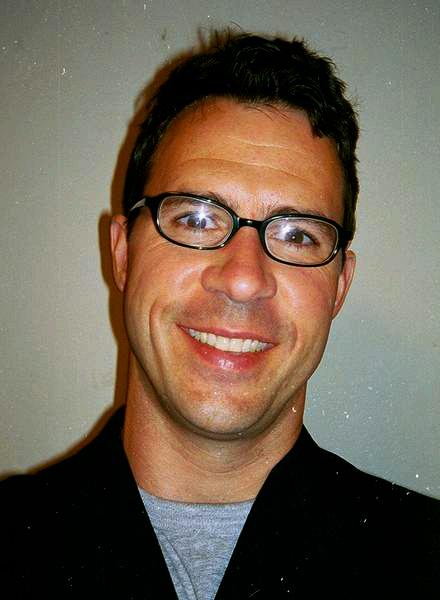
Are there any services that you recommend that can help families resolve elder parent caregiving conflicts? My 86-year-old father was recently diagnosed with early-stage Alzheimer’s disease, and to make matters worse, my sister and brother and I have been perpetually arguing about how to handle his future caregiving and financial needs.

It’s not unusual when adult children disagree with each other regarding the care of an elder parent. If you and your siblings are willing, a good possible solution is to hire an “eldercare mediator” who can help you work through your disagreements peacefully. Here’s how it works.
While mediators have been used for years to help divorcing couples sort out legal and financial disagreements and avoid court battles, eldercare mediation is a relatively new and specialized service designed to help families resolve disputes that are related to aging parents or other elderly relatives.

Family disagreements over an ill or elderly parent’s caregiving needs, medical care, living arrangements, driving issues, legal and financial decisions are just some of the many issues that an elder care mediator can help with.
But don’t confuse this with family or group therapy. Mediation is only about decision-making, not feelings and emotions.
The job of an elder mediator is to step in as a neutral third party to help ease family tensions, listen to everyone’s concerns, hash out disagreements and misunderstandings, and help your family make decisions that are acceptable to everyone.

Good mediators can also assist your family in identifying experts such as estate-planners, geriatric care managers, or health care or financial professionals who can supply important information for family decision making.
Your family also needs to know that the mediation process is completely confidential and can take anywhere from a few hours to several meetings depending on the complexity of your issues. And if some family members live far away, a conference or video call can be used to bring
everyone together.
If you’re interested in hiring a private eldercare mediator, you can expect to pay anywhere from $100 to more than $500 per hour depending on where you live and who you choose. Or, if available in your area, you may be able to get help through a community-based nonprofit program that offers free or low-cost services by volunteer mediators.




Finding a Mediator

To locate an elder mediator in your area, start by asking for referrals from health professionals or hospital social workers or search online at The Academy of Professional Family Mediators website (apfmnet.org) or Mediate.com. Both sites have search able directories.
Or, to search for free or low-cost community-based mediation pro grams, see the National Association for Community Mediation website (nafcm.org). Unfortunately, not all states offer them.
There is currently no universally accepted credential or professional standard for eldercare mediators, so make sure the person you choose has extensive experience with elder issues that are similar to what your family is dealing with. Also, be sure you ask for references and check them. Most elder mediators are attor neys, social workers, counselors or other professionals who are trained in mediation and conflict resolution.
Ever wonder how much you earned the year you worked your first job? Or any other year you worked? You can find out by reviewing your Social Security earnings record.
One of the most meaningful things adult children can do for aging parents is to honor their wishes regarding eldercare. There’s no better time than the present to ask about their plans to ensure they have the resources necessary to receive the quality of care they may need in the future.
Engaging a loved one in the often well-guarded subject of finances takes time and patience because seniors may not want to ask for help, even when they need it. Experts at St. Ann’s Community offer the following tips to help you ease into the conversation.

Talk with your loved one about the future before the added stress of an emergency enters the mix. When you visit, are there signs help may be needed such as stacks of unpaid bills, maintenance issues or a lack of groceries?
Daily living tasks like these are good conversation starters. Ask what supports can be put in place now, like setting up automatic bill pay or a home shopping service, to help your parents remain as independent as possible. Also, talk with other family members about how they can support your parents so you can preserve financial resources for future eldercare needs.
Are you able to pay a bill or handle a transaction on your parents’ behalf in the event of a health emergency? Work with them to gather financial and health information early on so you understand their obligations and what resources are available to pay expenses. Store this information in a safe place so you and other fiduciaries can access it easily.
Another important document is a power of attorney that indicates who
your parent(s) appointed to manage their affairs if they become unable to do so. If they don’t have one, put that at the top of your to-do list.
Other common essential documents to look for include:
• Mortgage and loan debt, including all credit card accounts
• Monthly utility and household bills
• Bank account statements
• Retirement accounts and social security income statements
• Mutual funds, brokerage accounts, stock certificates, savings bonds
• Insurance policies (Medicare, Medicaid, health, and long-term care)
• Property deeds and titles
• Recent tax returns
• Doctors’ names and contact information
• Health care proxy: Who is it and does this person have a good understanding of your loved one’s health condition, medical history, medications, and end-of-life wishes?
Consider talking with eldercare professionals to help your parents review the big picture and make informed decisions. Be sure to include family members with decision-making power in these meetings from the very beginning to assure that everyone is on the same page.
In time, doing small tasks to support your parents’ independence or helping gather financial, healthcare, and legal documents will help your parents see you are there to help. By talking to your parents while their health is good, you’ll have a plan in place to truly honor their eldercare wishes.
Submitted by St. Ann’s Community, a senior community offering a full continuum of care in Rochester. For more information, call us at 585-6976000 or visit stannscommunity.com.

Your earnings record shows your income for each year worked and your progress toward your future Social Security benefits. We keep track of your earnings so we can pay you the benefits you’ve earned over your lifetime. That’s why it’s important for you to review your Social Security earnings record.
While it’s your employer’s responsibility to provide accurate earnings information to us, you should still review your earnings history and inform us of any errors or omissions. This is so you get credit for the contributions you’ve made through payroll taxes. You’re the only person who can look at your lifetime earnings record and verify that it’s complete and correct.
If an employer didn’t properly report even just one year of your earnings to us, your future benefit payments could be less than they
Q.: I will rely on Medicare when I retire. Can you explain the different parts of Medicare?
A.: The different parts of Medicare cover your specific needs. There are four parts, all of which work in tandem to deliver healthcare services:
• Part A (hospital insurance): Helps pay for inpatient care in a hospital or skilled nursing facility (following a hospital stay), some home health care and hospice care.
• Part B (medical insurance): Helps pay for doctor’s services and many other medical services and supplies that hospital insurance doesn’t cover.
• Part C (Medicare Advantage plans): If you have Medicare Parts A and B, you can join a Medicare Advantage plan. Private companies offer Medicare Advantage plans, which are approved by Medicare. These plans generally help you pay the medical costs not covered by Medicare Part A and B.
• Part D (prescription drug coverage): Helps pay for medications doctors prescribe for treatment.
Q.: How do I earn Social Security credits and how many do I need to qualify for benefits?
A.: We use your total yearly earnings to figure your Social Security credits. The amount needed for a credit in 2023 is $1,640. You must
should be. Over the course of a lifetime, that could cost you tens of thousands of dollars in retirement or other benefits to which you are entitled. It’s important to identify and report errors as soon as possible. As time passes, you may no longer have easy access to past tax documents. Also, some employers may no longer exist or be able to provide past payroll information.
The easiest way to verify your earnings record is to visit www.ssa. gov/myaccount and create or sign in to your personal my Social Security account. You should review each year of listed earnings carefully and confirm them using your own records, such as W-2s and tax returns. Keep in mind that earnings from this year and last year may not be listed yet.
You can find out how to correct your Social Security earnings record by reading our publication How to Correct Your Social Security Earnings Record at www.ssa.gov/pubs/EN05-10081.pdf.
Let your friends and family know they can access important information like this any time at www. ssa.gov and do much of their business with us online.
earn $6,560 to get the maximum four credits for the year. The amount needed to earn one credit usually increases each year when average wages increase.
To qualify for Social Security benefits, you must earn a certain number of credits. The number of credits you need depends on your age when you apply and the type of benefit. No one needs more than 40 credits for any Social Security benefit. You can read more about credits in How You Earn Credits at www.ssa. gov/pubs/EN-05-10072.pdf.
For more information, visit our website at www.ssa.gov/retirement.
Q.: What is substantial gainful activity (SGA)?
A.: We use the term “substantial gainful activity,” or “SGA,” to describe a level of work activity and earnings. Work is “substantial” if it involves doing significant physical or mental activities or a combination of both.
If you earn more than a certain amount and are doing productive work, we generally consider that you are engaging in SGA. For example, the monthly SGA amount for 2023 is $1,470. For a statutorily blind person, that amount is $2,460. In these cases, you would not be eligible for disability benefits if you made more than those amounts. You can read more about substantial gainful activity and if your earnings qualify as SGA at www.ssa.gov/oact/cola/sga.html.
Located near Canandaigua Lake in the beautiful Finger Lakes Region. 80 Parrish Street offers recently renovated one bedroom apartments for seniors 62 and older. Amenities include serene outdoor patio, walking path, community room, library, emergency call pull cords in the bedroom and bathroom, secured front door entry system, and scheduled activities.
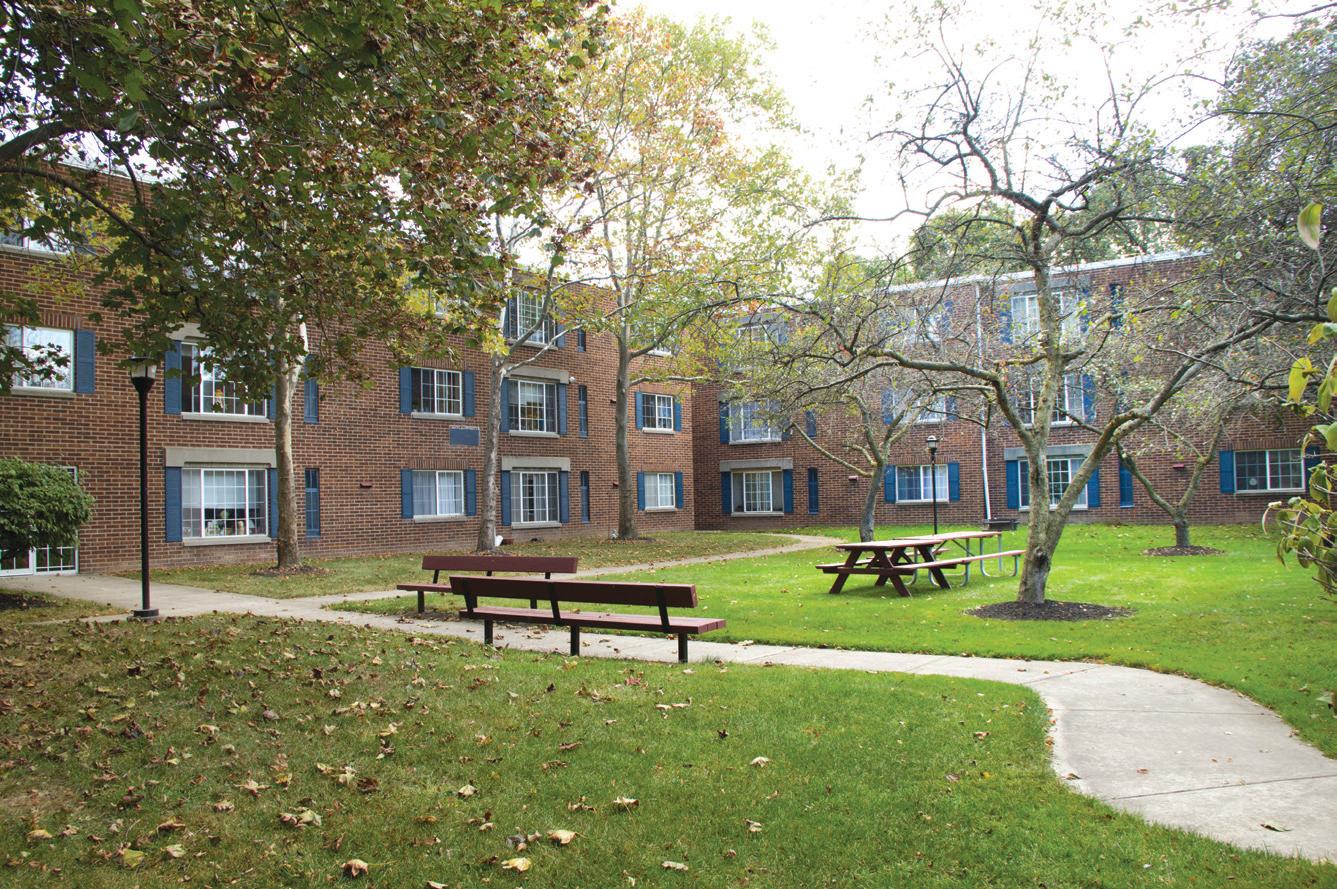


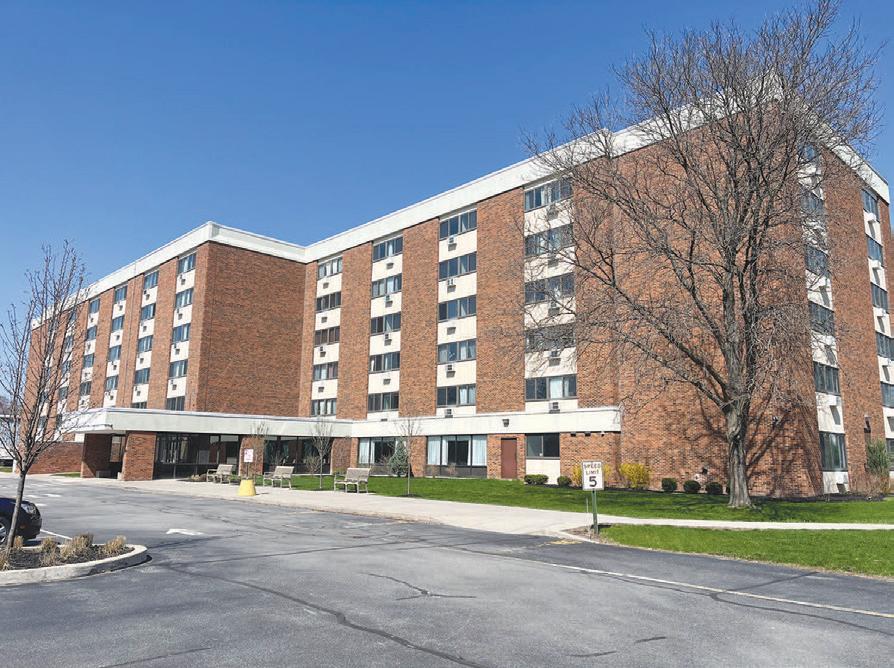


80 Parrish St., Canandaigua, NY 14424
585-412-6571 • Office hours are Mon.-Thurs. 8am-4pm, Fri. 8am-12pm



Come home to the serenity of Wilcox Lane and enjoy being within walking distance of Main Street amenities! Wilcox is a senior community consisting of one and two bedroom units. Each apartment has recently been renovated and has its own heating and air conditioning system, gas range, frost free refrigerator, and emergency call button. All bathrooms are equipped with grab bars, some with roll in showers. Located on a cul-de-sac, our residents enjoy quiet surroundings with beautifully landscaped grounds.
1 Bedroom Starting at $671-$761
2 Bedrooms Starting at $783-$822





St.




